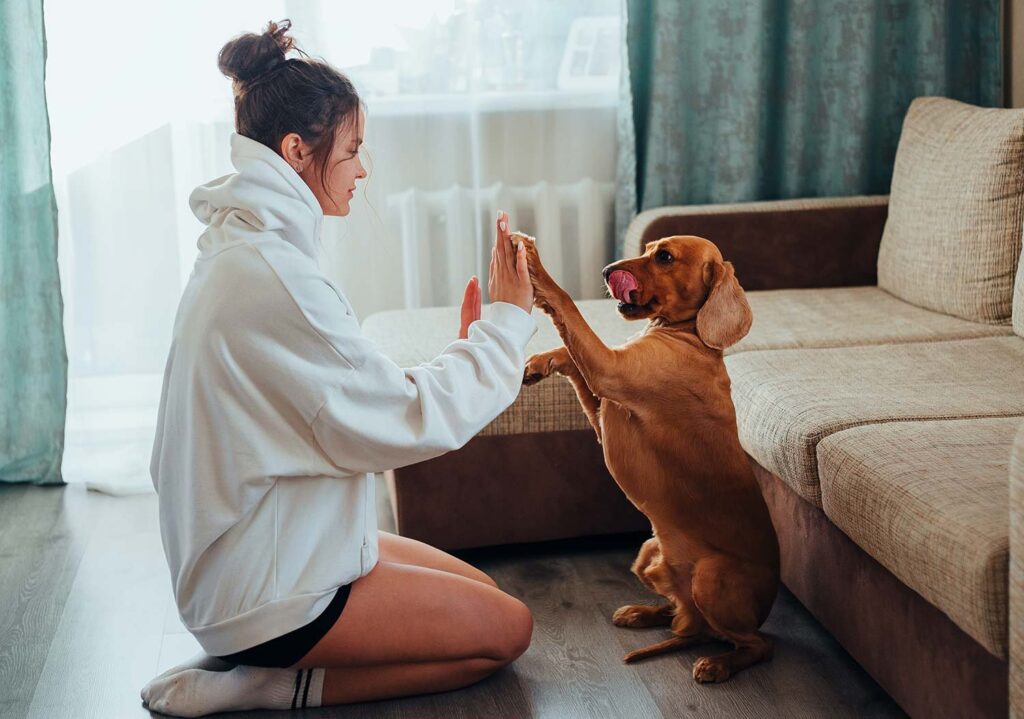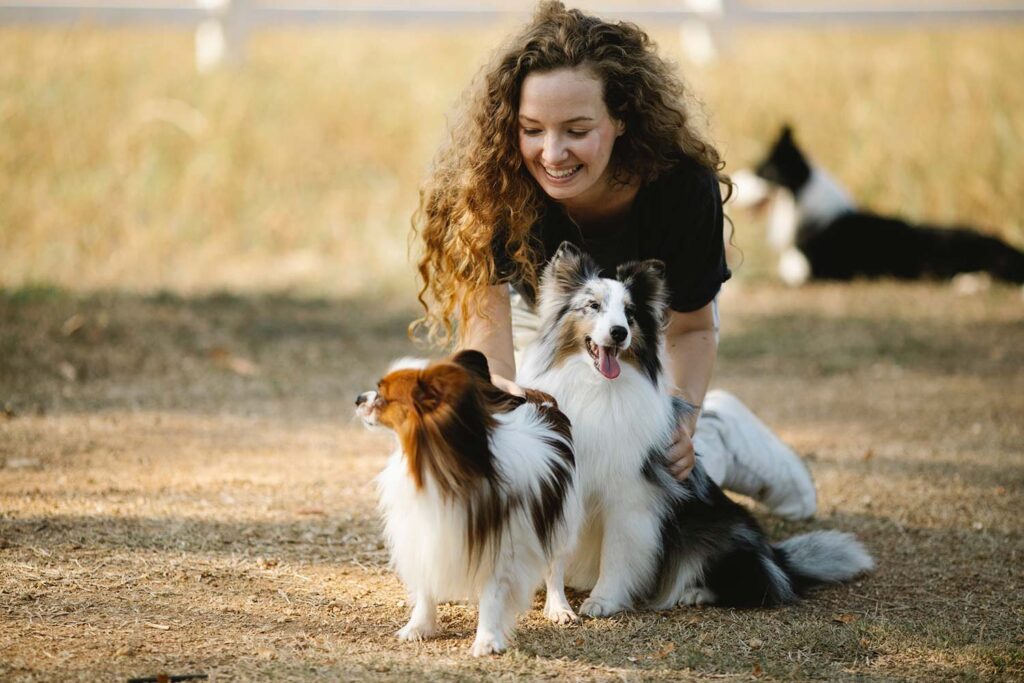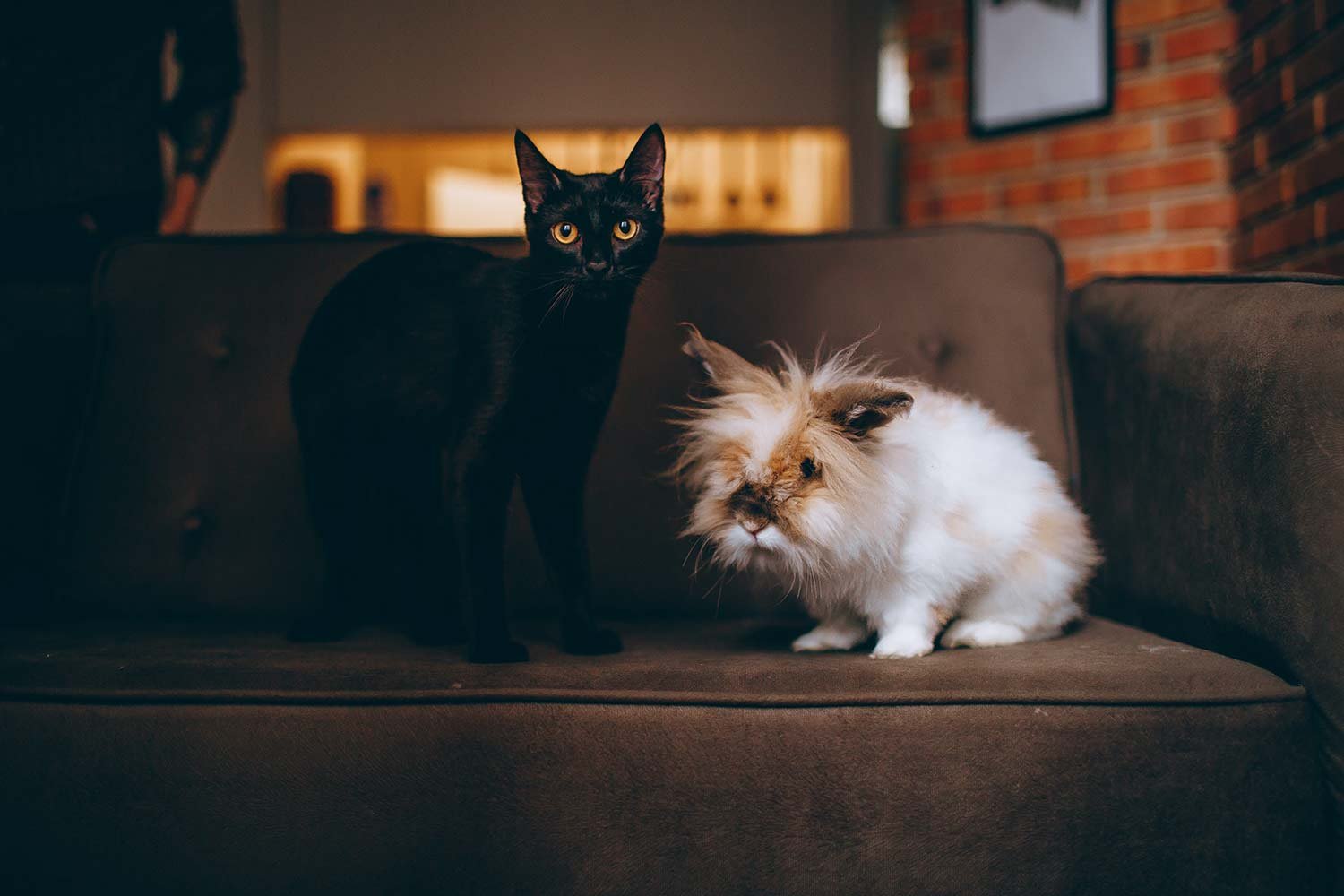Top Dog Breeds and Which Breed is Right for You
Are you thinking of bringing a new furry friend into your family, but overwhelmed by the numerous dog breeds out there?
With so many popular dog breeds to choose from, selecting the right one can be a daunting task. The right breed can make all the difference in creating a harmonious and happy home.

Choosing the perfect companion involves considering various factors, including your lifestyle, living situation, and personal preferences. Understanding the characteristics of different breeds can help you make an informed decision.
Key Takeaways
- Researching different breeds is crucial to finding the right fit.
- Consider your lifestyle and living situation when choosing a breed.
- Understand the characteristics and needs of your chosen breed.
- Some breeds require more exercise and training than others.
- Family dynamics and the age of children can influence breed choice.
The Journey to Finding Your Canine Companion
The process of selecting the perfect dog breed involves understanding the responsibilities and joys that come with dog ownership. It’s a decision that affects not just you, but your family and lifestyle.
The Lifelong Commitment of Dog Ownership
Owning a dog is a lifelong commitment that requires dedication, patience, and love. It’s essential to consider the long-term implications of caring for a dog, including providing a stable home, regular veterinary care, and a nurturing environment.
Why Breed Characteristics Matter
Different dog breeds have unique characteristics, temperaments, and needs. Understanding these breed-specific traits is crucial in finding a dog that fits your lifestyle. For instance, some breeds require more exercise or have specific grooming needs. Researching English dog breeds or British English dog breeds can help you identify the right companion for you.
Most Popular Dog Breeds in America Today
The most popular dog breeds in America today are a mix of old favorites and new rising stars.
The American Kennel Club’s annual list of most popular breeds provides insight into the diverse preferences of dog owners across the country. This list not only reflects the characteristics that make certain breeds appealing but also highlights emerging trends in dog ownership.
America’s Top 10 Favorite Breeds
The top 10 breeds often include a mix of small and large dogs, with characteristics ranging from gentle and affectionate to energetic and playful. Breeds like the Labrador Retriever, German Shepherd, and Golden Retriever consistently rank high due to their versatility as both family pets and working dogs.
| Rank | Breed | Characteristics |
|---|---|---|
| 1 | Labrador Retriever | Friendly, outgoing, and energetic |
| 2 | German Shepherd | Confident, intelligent, and loyal |
| 3 | Golden Retriever | Gentle, friendly, and loyal |
Why These Breeds Capture Our Hearts
Breeds that make it to the top of the list often possess traits that make them excellent companions. Their popularity can be attributed to their temperament, intelligence, and adaptability to various living situations.
Rising Stars in the Dog World
While traditional breeds remain popular, newer breeds are gaining traction. The Danish-Swedish Farmdog and the Swedish Vallhund are examples of breeds that are becoming increasingly popular due to their unique characteristics and versatility.
Small dog breeds suitable for apartment living
The charm of small dog breeds lies in their ability to thrive in smaller spaces, making them perfect for apartment dwellers. These compact companions bring joy and affection without requiring vast areas to roam.
Compact Companions Under 20 Pounds
Breeds like the Pomeranian and Yorkshire Terrier are not only adorable but also lightweight, making them ideal for smaller living spaces. They are perfect for city living where space is limited.
Managing Noise Levels in Close Quarters
One of the challenges of having a dog in an apartment is managing noise levels. Some small breeds, such as the Bichon Frise, are naturally quieter than others, making them suitable for close living quarters. Training and socialization can also play a significant role in minimizing barking.
“A well-trained dog is a joy to live with, and small breeds are no exception when it comes to responding to training.”
Exercise Solutions for Limited Outdoor Space
While small dog breeds don’t require vast spaces to run, they still need regular exercise. Indoor activities like hide-and-seek and indoor fetch can be great ways to keep them active. Additionally, short walks and visits to dog parks can provide the necessary physical and mental stimulation.
- Indoor play
- Short walks
- Dog park visits
Medium-Sized Dog Breeds for Versatile Lifestyles
For many dog owners, a medium-sized dog breed is the perfect companion, offering a balance between the energy of larger dogs and the manageability of smaller ones. These breeds are ideal for individuals or families who desire a pet that can adapt to their lifestyle, whether that’s an active outdoor enthusiast or someone who prefers quiet evenings at home.
The Goldilocks Zone: Not Too Big, Not Too Small
Medium-sized dogs typically weigh between 20 and 50 pounds and stand between 10 and 20 inches tall at the shoulder. This size range makes them versatile enough to fit into various living situations, from apartments to homes with yards. Breeds like the Cocker Spaniel and the Collie are excellent examples, offering a balance of size, temperament, and energy level.

Adaptable Breeds for Changing Circumstances
One of the key advantages of medium-sized dog breeds is their adaptability. Whether you’re a busy professional or a family with children, there’s a medium-sized breed that can fit your lifestyle. For instance, breeds like the Beagle are relatively low maintenance but still enjoy being part of family activities. On the other hand, breeds like the Australian Cattle Dog are highly energetic and require regular exercise, making them perfect for active owners.
“The right dog breed can bring immense joy and companionship into our lives, and medium-sized breeds are no exception, offering a wonderful balance of characteristics.”
Activity Levels and Space Requirements
When choosing a medium-sized dog breed, it’s essential to consider both activity levels and space requirements. Some breeds, like the Border Collie, require a lot of exercise and mental stimulation, while others, like the French Bulldog, are more laid-back. Here’s a comparison of a few popular medium-sized breeds:
| Breed | Activity Level | Space Requirements |
|---|---|---|
| Cocker Spaniel | Moderate | Medium |
| Beagle | Moderate | Medium |
| Australian Cattle Dog | High | Large |
Ultimately, the right medium-sized dog breed for you will depend on your lifestyle, living situation, and personal preferences. By considering factors like activity level and space requirements, you can find a breed that fits seamlessly into your life.
Large Dog Breeds with Gentle Temperaments
Gentle giants are a reality among large dog breeds, offering affection and loyalty to their families. Despite their size, these dogs are often referred to as “gentle giants” due to their calm and gentle nature.
Gentle Giants for Spacious Homes
Breeds such as the Great Dane and the Newfoundland are perfect examples of large dogs with gentle temperaments. They require spacious homes where they can move around comfortably.
- Great Danes are known for their friendly and gentle disposition.
- Newfoundlands are often used as therapy dogs due to their calm nature.
Exercise and Nutrition Requirements
Large dog breeds require regular exercise to stay healthy. A balanced diet that meets their nutritional needs is also crucial. For instance, large breed dog food is formulated to support their growth and maintain their overall health.
Special Health Considerations for Large Breeds
Large dog breeds are prone to certain health issues, such as hip dysplasia and bloat. Regular veterinary check-ups and a healthy lifestyle can help mitigate these risks.
Understanding Dog Breeds and Their Unique Traits
The history and characteristics of dog breeds play a significant role in determining their suitability as pets. With hundreds of breeds recognized worldwide, understanding their unique traits is crucial for making an informed decision.

How Breeding History Shapes Behavior
Dog breeding history significantly influences the behavior of different breeds. Originally, dogs were bred for various purposes such as hunting, guarding, and companionship. For instance, breeds like German Shepherds and Labrador Retrievers were bred for their intelligence and loyalty, making them highly trainable. Understanding the original purpose of a breed can provide insights into its behavior and needs.
Breed Groups and Their General Characteristics
Dog breeds are often grouped based on their original functions or characteristics. For example, the herding group includes breeds like Border Collies and Australian Shepherds, known for their high energy and intelligence. Recognizing these group characteristics can help potential owners anticipate the needs and behaviors of their dogs.
Individual Variation Within Breeds
While breed tendencies are important, individual dogs within a breed can vary significantly. Factors such as genetics, upbringing, and environment contribute to a dog’s personality and behavior. This is where the debate between nature vs. nurture comes into play.
Nature vs. Nurture in Dog Personality
The discussion around nature vs. nurture in dogs revolves around whether a dog’s behavior is primarily influenced by genetics (nature) or by environmental factors and training (nurture). Most experts agree that it’s a combination of both. For instance, a breed prone to guarding behavior can still be socialized to be friendly and gentle with proper training.
Understanding these aspects of dog breeds can help prospective owners choose a breed that fits their lifestyle and preferences, ensuring a harmonious relationship between dog and owner.
Hypoallergenic Dog Breeds for Allergy Sufferers
For individuals who suffer from allergies, the dream of owning a dog can become a reality with hypoallergenic dog breeds. These breeds are not 100% allergen-free but are more suitable for people with allergies.
What Makes a Dog Truly Hypoallergenic
Hypoallergenic dogs have a lower amount of the protein Fel d 1 in their saliva and dander, which is the primary culprit behind dog allergies. Breeds with low-shedding coats tend to release fewer allergens into the environment.
Top Low-Shedding Breeds to Consider
Some popular hypoallergenic dog breeds include the Poodle, Bichon Frise, and Portuguese Water Dog. These breeds are known for their low-shedding coats and are often recommended for individuals with allergies.
Grooming Requirements for Allergy-Friendly Dogs
While hypoallergenic breeds may reduce allergic reactions, they still require regular grooming. Frequent bathing and brushing can help minimize the amount of dander released into the air.
Best Dog Breeds for Families with Children
The ideal dog breed for a family with children should be gentle, playful, and able to adapt to a busy household. When choosing a breed, it’s essential to consider the temperament and energy level of the dog to ensure it matches your family’s lifestyle.
Patient and Playful Family Companions
Some dog breeds are naturally more suited for families with children. Breeds like the Labrador Retriever and Golden Retriever are known for their patience and playful nature, making them excellent companions for kids. These breeds are also highly energetic, so they can keep up with the active lifestyle of a family with children.
- Labrador Retriever: Known for their friendly and outgoing personalities.
- Golden Retriever: Friendly, loyal, and patient, making them a great choice for families.
- Beagle: Energetic and curious, Beagles are great with children and relatively small in size.
Safety Considerations for Kids and Dogs
When introducing a new dog to a family with children, it’s crucial to consider safety. Supervising interactions between dogs and young children is essential to prevent any potential conflicts. Teaching children how to interact gently with dogs can significantly reduce the risk of accidents.

Teaching Children to Respect Canine Boundaries
Educating children on how to respect a dog’s personal space is vital. This includes not teasing the dog, not disturbing it when it’s sleeping, and being gentle when petting. By teaching children these simple rules, you can foster a harmonious relationship between your kids and your dog.
By choosing a breed that is known to be good with children and taking steps to ensure safe interactions, families can enjoy a loving and safe environment for both their kids and their dog.
Senior-Friendly Dog Breeds for Older Adults
For seniors, the right dog breed can provide affection, comfort, and a sense of purpose. As people age, their lifestyle and living situation may change, making certain dog breeds more suitable than others.
Low-Energy Companions for Relaxed Lifestyles
Older adults often benefit from having a dog that doesn’t require a lot of exercise. Breeds with low energy levels are ideal as they are content with shorter, more leisurely walks. Some examples include:
- Bulldog: Known for their calm demeanor
- Pug: Playful yet laid-back
- Shih Tzu: Friendly and outgoing
Smaller Breeds That Are Easier to Handle
Smaller dog breeds are often more manageable for seniors, requiring less space and being easier to care for. These breeds can be a great companion without being overwhelming.
Emotional Support Benefits for Seniors
Dogs can offer significant emotional support to seniors, helping to reduce feelings of loneliness and isolation. The bond between a senior and their dog can be incredibly rewarding, providing a sense of companionship and affection.
Some key benefits include reduced stress levels, increased social interaction, and a sense of routine and responsibility.
Active Dog Breeds for Outdoor Enthusiasts
For outdoor enthusiasts, having a dog that’s always ready for adventure can be a dream come true. Active dog breeds are not just pets; they’re companions that share your love for the outdoors and your energy levels.
Athletic Companions for Running and Hiking
Breeds like the Border Collie and Australian Shepherd are known for their athleticism and love for physical activities. They thrive on running, hiking, and playing outdoors, making them perfect for active owners.

Working Breeds with High Energy Levels
Working breeds, such as the Siberian Husky and German Shepherd, have high energy levels and require regular exercise to stay happy and healthy. These breeds are ideal for outdoor enthusiasts who can provide them with the physical and mental stimulation they need.
Meeting the Exercise Needs of Active Dogs
To keep active dog breeds satisfied, it’s crucial to provide them with a variety of exercises, including running, hiking, and playtime. Regular exercise not only keeps them physically fit but also mentally stimulated, reducing the risk of boredom and destructive behavior.
Outdoor enthusiasts with active dog breeds can enjoy a range of activities together, from long hikes to agility training, ensuring a strong bond and a happy, healthy dog.
Mixed Breed Dogs: The Wonderful World of Mutts
Mixed breed dogs, often referred to as mutts, bring a unique blend of characteristics that can make them ideal companions. Their diverse genetic makeup can result in a fascinating combination of traits.
Health Benefits of Genetic Diversity
Genetic diversity in mixed breed dogs can lead to a stronger immune system and reduced susceptibility to certain breed-specific health issues. This hybrid vigor is a significant advantage of mixed breed dogs.
- Lower risk of inherited disorders
- Improved overall health
- Increased resilience
Rescue Organizations and the Adoption Process
Adopting a mixed breed dog from a rescue organization can be a rewarding experience. Many rescue groups work tirelessly to care for and rehome dogs of various breeds and mixes.
“Adopting a pet from a shelter or rescue organization can be a life-changing decision, not just for the animal, but for the adopter as well.”
Predicting Adult Traits in Mixed Breed Puppies
Predicting the adult traits of a mixed breed puppy can be challenging due to the variability in breed mixes. However, understanding the characteristics of the parent breeds can provide valuable insights.
Conclusion: Matching Your Lifestyle to the Right Breed
Choosing the right dog breed is a crucial decision that can significantly impact your life and the life of your new canine companion. With so many breeds to choose from, it’s essential to consider your lifestyle, living situation, and personal preferences when selecting a breed.
Whether you’re looking for a low-maintenance companion or an active partner for outdoor adventures, there’s a breed out there that’s perfectly suited to your needs. By understanding the unique characteristics of different breeds, you can make an informed decision and find a dog that fits seamlessly into your life.
designed dog breeds for specific purposes, such as hunting or companionship, have distinct traits that make them more or less suitable for different lifestyles. By matching your lifestyle to the right breed, you can create a harmonious and fulfilling relationship with your dog. Researching the best dog breeds for your situation is key to a successful dog ownership experience, ensuring a great match when matching lifestyle to dog breed.
FAQ
What are the most popular English dog breeds?
Some of the most popular English dog breeds include the Labrador Retriever, English Bulldog, and Cocker Spaniel, known for their friendly and affectionate nature.
Are there any small English dog breeds suitable for apartment living?
Yes, there are several small English dog breeds that are well-suited for apartment living, such as the Cavalier King Charles Spaniel and the Yorkshire Terrier, due to their compact size and relatively low exercise needs.
What are some large English dog breeds known for their gentle temperaments?
Large English dog breeds like the Newfoundland and the Bernese Mountain Dog are renowned for their gentle and calm nature, making them excellent companions for families.
Can English dog breeds be hypoallergenic?
While no dog is 100% hypoallergenic, some English dog breeds like the English Springer Spaniel and the Bichon Frise are considered hypoallergenic due to their low-shedding coats.
What are the best English dog breeds for families with children?
English dog breeds such as the Beagle, the Cocker Spaniel, and the Labrador Retriever are highly recommended for families with children due to their patient, playful, and loving nature.
Are there any English dog breeds suitable for older adults?
Yes, several English dog breeds are suitable for older adults, including the Shih Tzu and the Pug, due to their low-maintenance and affectionate personalities.
What are some active English dog breeds for outdoor enthusiasts?
Active English dog breeds like the Pointer and the English Setter are perfect for outdoor enthusiasts, requiring regular exercise and mental stimulation to thrive.
Can mixed breed dogs make good pets?
Absolutely, mixed breed dogs can make wonderful pets, offering the benefits of genetic diversity and a unique personality, and can be adopted from rescue organizations.
How do I choose the right dog breed for my lifestyle?
To choose the right dog breed, consider factors such as your living situation, activity level, and the amount of time you can dedicate to your dog’s care and exercise needs.










